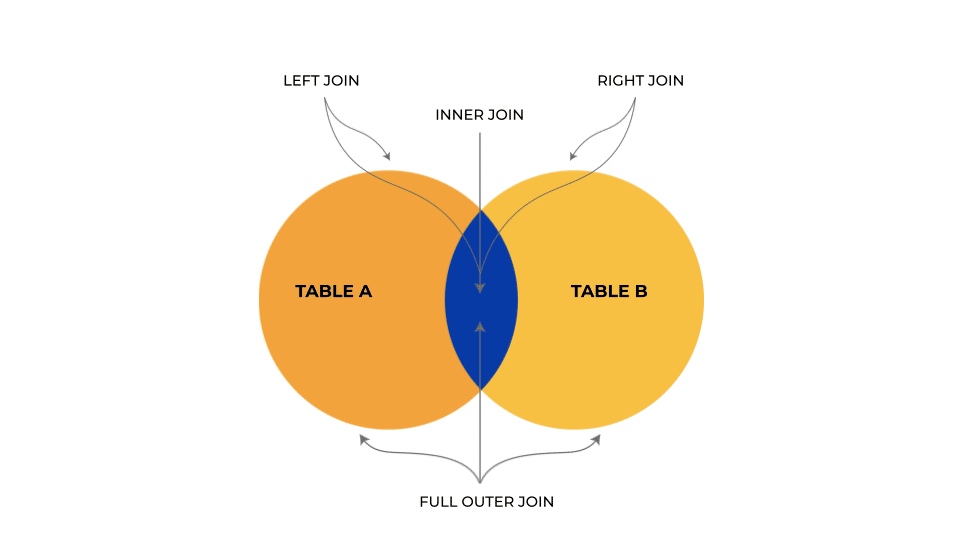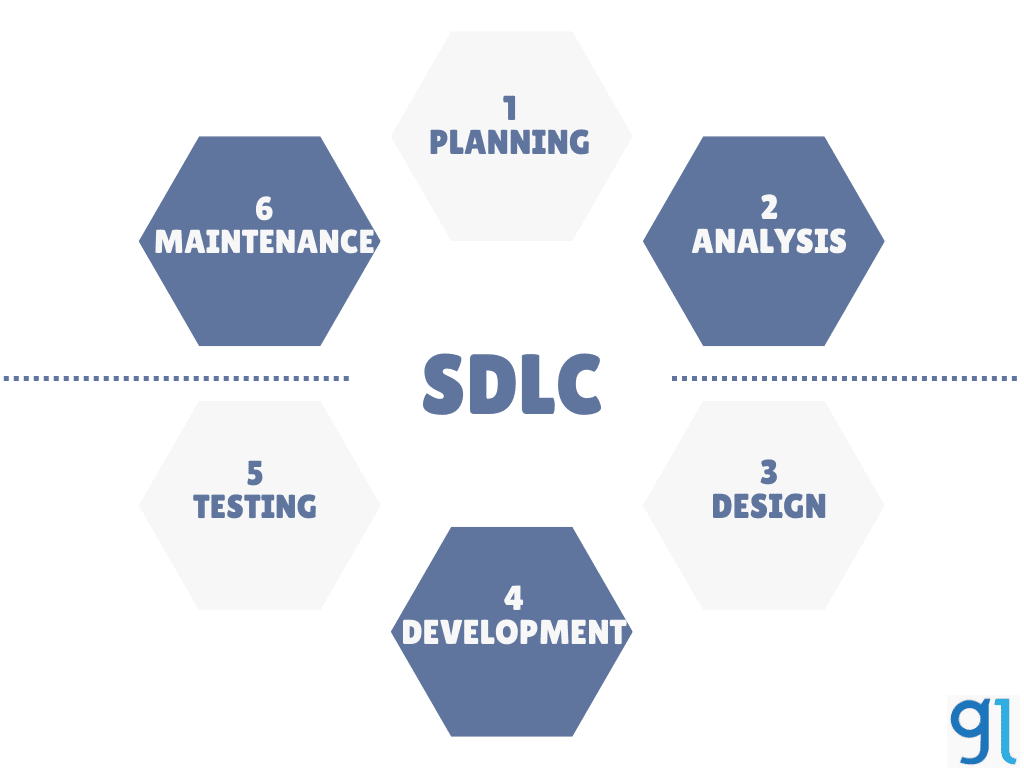Looking to land a job in India’s one of the top IT services companies? After TCS, Infosys is the second-largest IT company in India and amongst the top favourite for aspiring IT professionals. If you are also one of the aspirers and wish to crack the interview, then don’t worry, as we have got you covered. To start with, knowing the requirements for the job is crucial if you are a fresher and want to work at Infosys. In this blog about Infosys Interview Questions, we will first learn about the company, discuss its recruitment process, and then talk about the most asked interview questions.
We have compiled an apt list of Infosys interview questions for freshers as well as professionals. But before getting started, have a look at the frequently asked questions about the Infosys interview.
- What is the salary for freshers in Infosys?
- Can I join Infosys without a degree?
- How should I prepare for Infosys technical interview?
- Is Infosys Interview easy to crack?
- Why should we hire you in Infosys?
- What is the work culture like at Infosys?
- How is Infosys interview for experienced?
- Why do you want to join Infosys?
- How many rounds are there in Infosys placement?
- What is InfyTQ certification?
Table of Contents
- About Infosys
- Infosys Recruitment Process
- Infosys Interview Questions for Freshers and Experienced
- Conclusion
- Frequently Asked Questions
About Infosys
Infosys is a multinational (MNC) IT consulting firm that offers end-to-end services in business consulting, information technology, and outsourcing, allowing clients in various industries to improve their company performance. Infosys primarily serves firms in the finance, manufacturing, insurance, and other sectors by providing software development, product maintenance, and independent validation services.
Infosys Technologies Ltd was founded in 1981 and was previously known as Infosys. N. R. Narayana Murthy and a team of six other engineers created Infosys in Pune. The company was founded with a US$250 initial capital commitment. Bangalore, India, is now the headquarters of Infosys.
Infosys assists clients in more than 50 countries in developing and implementing various digital transformation strategies. In addition to assisting clients in improving their overall business performance, Infosys also assists them in becoming a smarter organization. This enables its clients to concentrate on their key business objectives.
Infosys has experience in a variety of industries. From assisting in the development of more fuel-efficient smart cars and lighter and stronger passenger jets to enabling banks to provide financial inclusion to the world’s most remote locations and providing technology professionals with solutions to maximize their global reach, Infosys delivers innovative products and services in a big way. Infosys is changing the way the world works and lives through this rigorous methodology.
In this Infosys interview questions article, the most frequently asked Infosys technical interview questions are listed properly.
So, let’s get started.
Infosys Recruitment Process
Online assessment round -Aptitude -Quantitative Aptitude -Logical Reasoning -Verbal Ability Technical interview round HR interview round
Eligibility:
- You must have a grade point average of 60% or better in 10th & 12th.
- Graduation: 60% or 6.0 CGPA or equivalent, as determined by the standards of your university.
Process of Recruitment:
- The Infosys Recruitment Process generally consists of 3 rounds of selection:
Online assessment round
- The initial stage in the hiring process is an online evaluation test. Candidates who survive this phase will be invited to the technical interview rounds.
- Aptitude: The Aptitude Test is the first milestone in the employment process at Infosys. This round is divided into three sections:
- Quantitative Aptitude: This phase will assess the candidate’s mathematical ability. The Quantitative Aptitude component covers Time, Speed & Distance, Number Series, Simple & Compound Interest, Probability, Permutation & Combination, Ratios & Proportions, and Percentages.
- Logical Reasoning: This section will examine the candidate’s critical and logical thinking. In this section, you will be quizzed on the following topics: Data Sufficiency, Data Interpretation, Data Arrangements, Logical Word Sequence, Statements and Inferences, Inequalities, Coding, Decoding, Series, Analogy, and Visual Reasoning.
- Verbal Ability: This component will test the candidates’ command of the English language. The questions in this part will cover the following topics: Error-Spotting, Sentence Improvement, Sentence Completion, and Para-Jumbles, among others.
- Check out this free Smart English Course.
| Name of the Section | Number of Questions | Duration of Time |
|---|---|---|
| Mathematical Ability | 10 | 35 Minutes |
| Logical Reasoning | 15 | 25 Minutes |
| Verbal Ability | 20 | 20 Minutes |
| Pseudo Code | 5 | 10 Minutes |
| Puzzle Solving | 4 | 10 Minutes |
- Technical interview round
- Following successful completion of the online exam, your technical talents are evaluated at a technical interview, which is generally connected to the technical knowledge necessary for the post for which you have applied. Your problem-solving and numerical thinking abilities will be put to the test in these problems.
- The most vital phase in the procedure is the technical face-to-face interview. You should understand and be able to describe computer concepts such as OOPS, DBMS, CN, OS, and so on to the interviewer. It is important to have knowledge of at least one programming language.
- You may be requested to write code as well. The interviewer will also examine your problem-solving abilities. You’ll be questioned about your prior projects and professional experiences, including what you did, how you used technology, and how successful you were.
- The number of technical interviews scheduled will be determined by your performance in previous rounds, job description, and corporate requirements.
- HR interview round
Following the completion of the technical round, every firm performs an HR interview round to examine your personality, strengths, weaknesses, and ability to manage the work, as well as to assess your background and determine whether you’re the best match for this position.
They can also inquire about Infosys’s history, such as when the company was founded, its aims, beliefs, and organisational structure, among other things. If you’re preparing for an HR round, you can presume to be asked some of the below questions:
1. Please tell me about yourself. (This is the opening question, and it will very probably be asked throughout each round of the interview. This question is best answered by telling the interviewer about your interests, skill sets, strengths, credentials, projects, and triumphs. Begin with your present position, achievements, job background, and personal information.)
2. Your expectations concerning this role?
3. Why do you wish to join Infosys?
Infosys Interview Questions for Freshers and Experienced
Questions and Answers on OOPs
What is an Object in OOPs?
Objects are runtime entities that have certain properties.
Take, for illustration, a bouquet of Lillies, Roses, and Tulips. Every flower has its unique qualities, such as various shapes, colours, and scents. This is just a collection of objects.
What is a Class in OOPS?
A class is a type of object that governs how it will act and what it will include. In other words, it’s a blueprint or instructions for constructing a specific thing.
Let’s use the same example as before: a bouquet. The class is a bouquet, and the objects are the various varieties of flowers that make up the bouquet. As a result, we can define objects as instances of a class.
What are the four basic principles of OOPs?
The idea of real-world entities as objects is central to object-oriented programming. It binds data to the functions that operate on it, preventing any other section of the code from accessing the data except that function.

OOPs are based on four major principles:
- Data encapsulation: This is when data and methods are combined into a single unit called a class. Data encapsulation supports the camouflage and/or coverup of data or info from the outside world or entity.
- Data abstraction: Data abstraction is the representation of important properties without their background details.
- Inheritance: Inheritance is the process of transferring existing class properties to a new class. The existing class (parent class) is referred to as the base class, while the new derived class is referred to as the subclass (child class). It is beneficial to code reusability.
- Polymorphism: Polymorphism states an object’s ability to take on several forms. Method overloading is used to provide compile-time polymorphism in Java, whereas method overriding is used to accomplish run-time polymorphism.
Can we implement multiple inheritances in Java?
Java does not explicitly support multiple inheritances. With the use of an interface, we may achieve multiple inheritances. Multiple interfaces can be incorporated into our program.
How is method overloading different from method overriding?
Method overloading occurs when two methods have the same name but differ in the number of parameters or the type of arguments they accept. Compile-time polymorphism is what it’s called because it happens during the compilation process.
Method overriding refers to the ability to construct subclass and super-class methods with the same name and signatures, with the subclass method taking precedence over the super-class method. Run-time polymorphism is a type of polymorphism that occurs during the execution of a program.
What is a Constructor?
A constructor is a class’s special member function that is called automatically whenever a new instance of the class is created. It has a similar name as the class it goes to.
You get bonus points if you know this. If a programmer does not explicitly define a constructor in the code, the compiler creates one for them automatically. When a programmer constructs a function constructor, whether parameterized or non-parameterized, the compiler does not produce the default constructor.
What do you mean by access specifiers?
Outside of the class, access specifiers are used to define how members (functions and variables) can be accessed. There are 3types of access specifiers: public, private, and protected.
- private: Members who are defined as private are only available within the same class and cannot be accessed outside of that class.
- public: Members who have declared themselves to be public can be accessed from anywhere.
- protected: Members who have been designated as protected cannot be accessible from outside the class unless they are members of a child class. In the context of inheritance, this access specifier is important.
Explain pointers in C++
A pointer is a variable that carries the address of another variable of the same data type. Pointers may be constructed for any data type and user-defined data types such as class, structure, etc. It enables variable passing through address references. For illustration:
int x = 25;
int *ptr = &x;
cout << ptr;
- ptr will hold the address of x here. For example, the ptr value is the address of x.
- We may get the value stored in the address addressed by ptr by using *ptr (i.e., 25). The *ptr operator is also known as the dereference operator.
Pointers have the following applications:
- To point to a variable stored in memory.
- Keeping track of the addresses of dynamically allocated memory chunks.
Give examples of data structures in C++.
There are 2 types of data structures in C++; they are as follows: linear and nonlinear.
- Linear – data elements are stored in sequence or arrangements. Instance, stack, queue, and linked list.
- Non-linear – tree and graph that are not stored sequentially or ordered.
What is inheritance? Name its types.
One of the most significant ideas of OOPs languages is inheritance. We may apply the properties of one class to another via inheritance. The idea of inheritance improves the programming language’s code reusability.
Various types of inheritance are:
- Single inheritance
- Multi-level inheritance
- Hierarchical inheritance
- Multiple inheritances
- Hybrid inheritance
- Multipath inheritance
What is the difference between array and pointer?
An array is a collection of comparable elements with the same data type, whereas a pointer is a variable that points to some data type in memory. Arrays can only contain components of the same data type, but pointers can link to any data type variable.
Questions and Answers on C, C++
What is Preprocessor in C/C++?
Preprocessors are programmes that examine a piece of code before compiling it. Preprocessor programmes, which begin with the # symbol, give preprocessor directives that inform the compiler to preprocess the code before compiling.
Why do we use stdio. h in a program?
“Standard input-output” is abbreviated as “stdio.” As a result, #include is the same as including this standard input-output library in your code. In this fashion, you can use the IO functions accessible via printf and scanf. It’s a pre-processor directive because it’s done before your code is processed.
What is a NULL pointer in C?
A NULL pointer is a pointer that does not refer to any address other than NULL. For instance, int *p=NULL;
What is a pointer on a pointer?
It’s a type of pointer variable that can hold the address of another type of pointer variable. It refers to the data stored in the selected pointer variable twice. For example, int x = 5, *p=&x, **q=&p; As a result, **q can access ‘x’.
What is the difference between the local variables and global variables in C?
Local variable: A local variable is a variable that is declared within the scope of a function or block.
Global variable: A global variable is a variable that is declared inside or within a function or block.
What is the use of return 0?
The main function in most C and C++ applications is type int. Hence it should return an integer value. The application’s “Exit Status” is determined by the return value of the main function. As a result, return 0 is utilized to complete the programmes using the integer return type.
Question and Answers on DBMS and SQL
What is Database Management System?
A database management system (DBMS) is a piece of software that allows you to create and manage databases. The end-user can construct and maintain databases with the help of a database management system (DBMS). The database management system (DBMS) links the end-user/application and the databases.
Enlist different advantages of DBMS.
Database Management System has a long number of benefits, as stated below:
- Improved data security
- Improved data sharing
- Better data integration
- Minimized data inconsistency
- Improved data access
- Improved decision making
- Increased end-user productivity
What do you mean by Object-Relational DBMS?
The object-relational database (ORD) is a database management system (DBMS) that combines both an object-oriented and a relational database (RDBMS). ORD’s schemas and query language enable the main components of an object-oriented database model, such as inheritance, classes, and objects.
An object-relational database management system is another name for an object-relational database (ORDBMS).
What is database Schema?
The integrity restrictions placed on a database are a set of formulas (sentences) called the database schema.
What are DDL and DML commands in SQL?
- Data Definition Language (DDL) is a programming language that is used to define data. DDL instructions are used to define database schema, which is to say, to construct and alter the database object structure. CREATE, ALTER, DROP, TRUNCATE, and similar commands are examples.
- Data Manipulation Language (DML) is a programming language that allows you to manipulate data. To manipulate the data in the database, DML commands are utilized. INSERT, UPDATE, and DELETE are all examples of SQL commands.
Differentiate between TRUNCATE and DELETE commands in SQL.
| TRUNCATE | DELETE |
|---|---|
| It’s used to get rid of all the records in a database table. | It is used to remove one or more records from a database table. |
It’s a DDL command (Data Definition Language). | It’s a command in the Data Manipulation Language (DML). |
| DELETE command is faster. | When compared to the TRUNCATE command, this command is slower. |
| Because it only works on tables, it can’t be used for indexed views. | It’s possible to use it with indexed views. |
Why indexing in SQL is useful?
A SQL index is a quick lookup table that aids in the discovery of frequently searched records. An index is a type of database that is quick, compact, and designed for quick lookups. It’s handy for connecting relational tables, searching huge tables, and quickly retrieving data from a database.
What is the left outer and right outer join in SQL?
- Left outer join: It returns the whole set of records from the left table and the records from the right table that have been matched.
- Right outer join: It returns the whole set of records from the right table and the records from the left table that are matched.

What is the stored procedure?
A stored procedure is a logical unit for a set of statements that may be retrieved by programmes that use an RDBMS (Relational Database Management System). These are saved in the data dictionary of the database. It can be used for data validation as well as access control.
Questions and Answers on Computer Networks and Software Testing
Different between a session and a socket?
The Socket is made up of the IP address and the Port Number. The logical connection between the source and the destination is known as a session.
What is the difference between TCP and UDP?
| TCP | UDP |
|---|---|
| Connection-orientated protocol | Connectionless protocol |
| Segment sequencing | No sequencing |
| Acknowledge sequencing | No windowing and retransmission |
| Reliable transmission protocol | Unreliable transmission protocol |
What is SDLC (Software Development Life Cycle)?
SDLC (Software Development Life Cycle) is an end-to-end procedure that outlines the software development flow from requirements to maintenance and support. Requirements analysis, planning, definition, design, development, testing, deployment, maintenance, and support are the steps of the SDLC.

What are the disadvantages of the Waterfall model?
- Only after the life cycle is working software developed.
- Unsuitable for both complicated and object-oriented programmes.
- Measuring development within each step is difficult.
- Not recommended for projects with regular requirements that could result in a significant risk of change. As a result, this model carries a significant level of risk and uncertainty.
- Because integration is completed at the end, it is impossible to discover any business or technology bottlenecks or issues early on.
Explain about Agile model.
- Agile is a software development paradigm that uses an iterative approach to help teams offer value to their customers faster, with higher quality, fewer errors, and better flexibility in responding to change. Check Agile Methodology here.
- Rather than a “big bang” launch, an agile team releases a product in modest increments. Requirements, planning, and outcome evaluation are all done regularly, so teams have a built-in mechanism for responding quickly to change.
- The most popular Agile techniques are Scrum and Kanban.
What is DLL and EXE file extension?
The EXE file extension is used for executable files and identifies them as programmes. It is self-contained. An EXE establishes its memory and processing area.
A dynamic link library (DLL) is a collection of functions and procedures that other programmes can use. A variety of programmes can use this DLL. The caller application’s memory and process space will be shared.
Differentiate between white box and black box testing.
| White box testing | Black box testing |
|---|---|
| The tester will completely understand the application’s internal workings. | It is not required that you understand the application’s internal workings. |
| Developers and testers are in charge of it (QA). | The end-user, developers, and testers are responsible for it. |
| It takes longer and requires more effort. | It takes a least and minimum of time and effort. |
| Test data and test cases will be created here by a tester. | External or end-user testing is carried out. |
| Open box, structural testing, clear box, and code-based testing are all terms used to describe white box testing. | Closed box, functional, and data-driven testing are other terms for black-box testing. |
Which is the most popular SDLC model?
The waterfall model is one of them. The other is AGILE, which is gaining popularity because of its continuous iteration process, which is less prone to faults in a production setting.
Conclusion
We hope you find this post on Infosys Interview Questions and Answers to be helpful in your preparation for the Infosys interview.
If a candidate is not chosen, Infosys will not enable him or her to apply again for the next six months, so give it your all to pursue your dream job at Infosys. Remember that while no one can foretell what questions the interviewer will ask, preparation is essential for success in the Infosys interview process. This blog will prove to be helpful for Infosys system engineer interview questions or any other job profile that you want to get in.
Frequently Asked Questions
What is the salary for freshers in Infosys?
Freshers’ Average Annual Salary at Infosys is ₹ 3,38,152/year with an estimated take-home salary of ₹ 24,564-₹ 25,983/month.
Can I join Infosys without a degree?
As most of the MNCs require a relevant Bachelor’s degree of 3 or 4 years, so does Infosys. However, Infosys has started making an exception of hiring folks with no degree but relevant knowledge and certification. As long as you have the skill set to do the job, you are welcomed by Infosys in the IT sector.
How should I prepare for Infosys technical interview?
The following knowledge is what Infosys requires you to possess for the technical interview. If you put the utmost effort into your preparation for these areas, you will undoubtedly succeed in the interview.
- Programming languages like C, C++, or Java will be the subject of the majority of the questions. You must be certain that you are selecting the appropriate programming language because questions might be posed straight from syntax in this case.
- Basic computer concepts like OOPs, networking, and operating systems are possible question topics. You will also be required to write a program, the major focus of which will be on checking your knowledge of syntax and logic-building capabilities.
- A thorough understanding of data structure fundamentals like a stack, linked list, queue, trees, graphs, etc. may come up as well. DSA is an important concept in terms of technical interviews.
- You are required to have a solid understanding of database principles like SQL, MongoDB, etc. Here, questions can be posed using both SQL syntax and fundamental relational database concepts.
Is Infosys Interview easy to crack?
The Infosys interview is moderately challenging. You can simply go through all the rounds if you have strong technical and communication skills. You can address any complex questions posed by the interviewer at Infosys if you prepare well for the interview.
Why should we hire you in Infosys?
This, undoubtedly, is the most asked question in almost all companies. If you come across this question, you can answer it like, “I want to pursue a job that reflects my passion and interests because I have discovered that I am great at logic building and an extraordinary coder. I created various softwares during my time in college as part of our curriculum. I want to begin my career with a reputable IT firm, and I am confident that Infosys is the greatest place for me to learn more and have more prospects to advance.”
What is the work culture like at Infosys?
Infosys always maintains a highly welcoming workplace environment. The hierarchy is kept to a minimum, and fresh ideas are freely shared. In essence, Infosys seeks to establish a workspace where politics are reduced to a bare minimum, and the workforce relishes an open work environment.
Infosys has always considered its employees to be its most valuable resource, and it works tirelessly to inspire them by creating a pleasant and stable work environment. Infosys makes sure there is always a healthy work-life balance. On site, recreational and entertainment facilities keep employee productivity and satisfaction high.
How is Infosys interview for experienced?
At Infosys, there are typically two rounds of interviews for experienced candidates: a technical round and an HR round. However, for key positions, you might have to go through two or more rounds of technical interviews before an HR interview.
Why do you want to join Infosys?
You can answer this question by saying that Infosys is an ideal place for anybody to begin their career and a great place to learn and grow. A career at Infosys offers world-class training, excellent mentors and learning opportunities, fantastic infrastructure and facilities, along with great work culture.
How many rounds are there in Infosys placement?
There are essentially going to be 3 rounds:
- Online assessment round
- Technical interview round
- HR interview round
For experienced candidates as well, the hiring procedure does not change. For some different positions, however, you might need to go through two rounds of technical interviews before an HR interview.
What is InfyTQ certification?
The InfyTQ certification test evaluates your industry preparedness by assessing your understanding of databases and programming. The best thing about InfyTQ is that, if you pass the test, you can have a direct interview with Infosys for a job.
How do I qualify for InfyTQ?
Following is the eligibility criteria to qualify in InfyTQ:
- Graduates from B.E., B. Tech, M.E., M. Tech., M.Sc., MCA, or MCM
- Must be an Indian citizen
- Minimum 60% marks throughout the academic years
What qualifications and personal skills does Infosys normally look for in freshers?
Academic qualifications and professional achievements are both highly valued by Infosys. Some qualities and skills employers look for in potential candidates, particularly at entry-level positions, include analytical skills, teamwork, and leadership skills, communication skills, and the ability to innovate and create.






